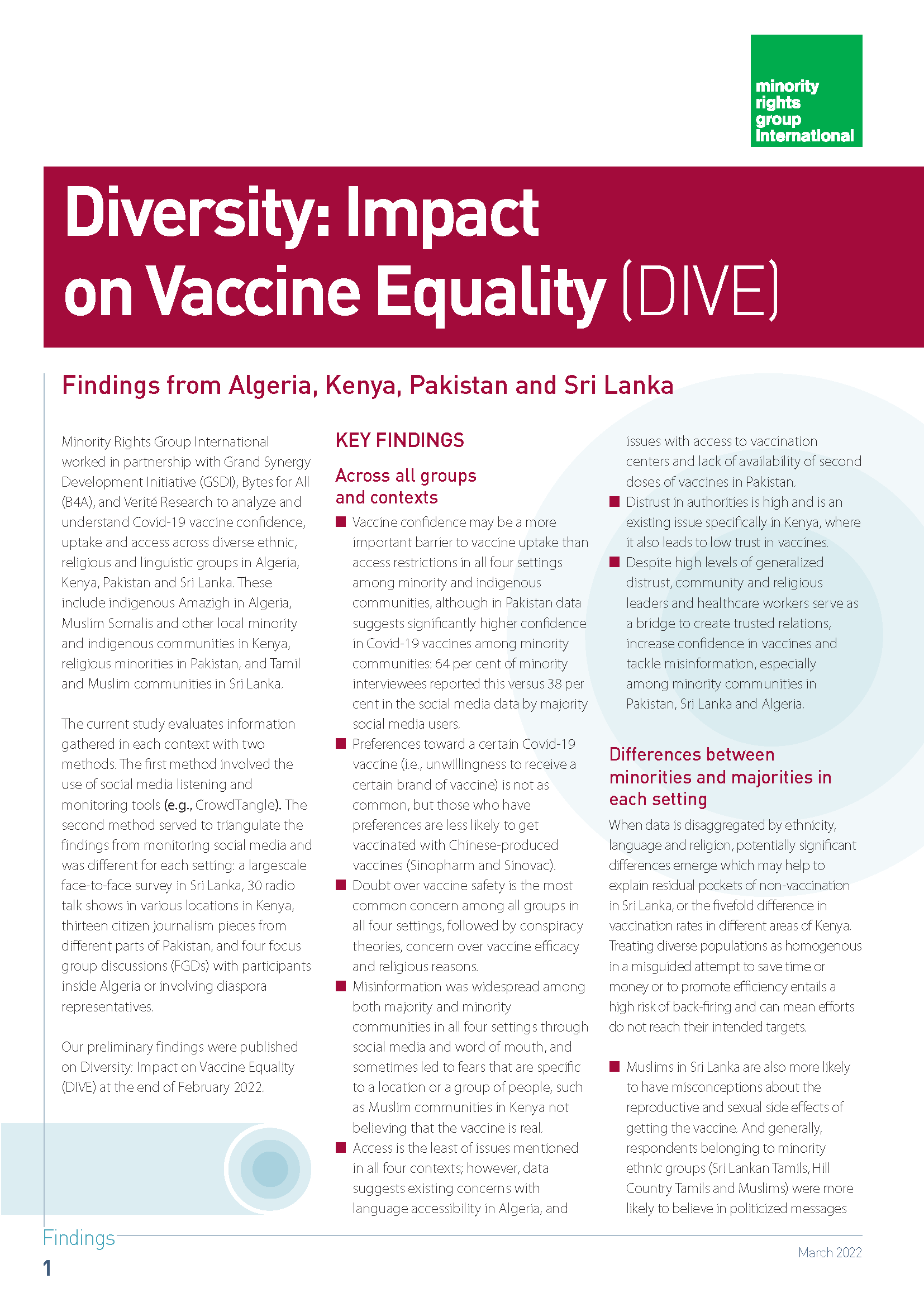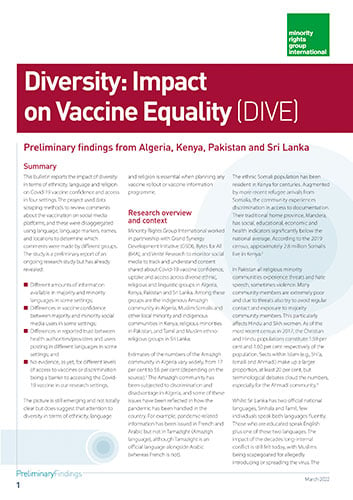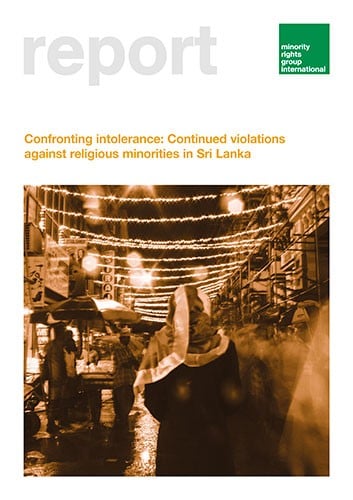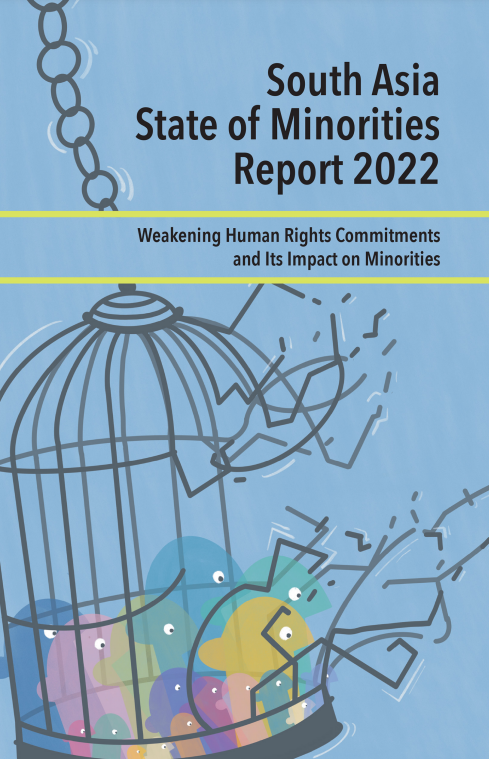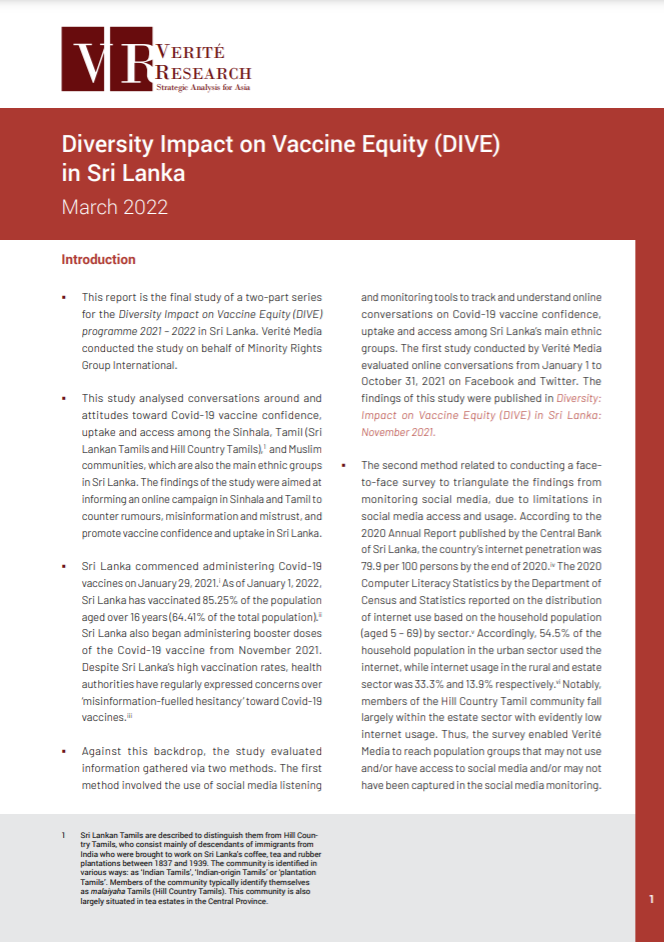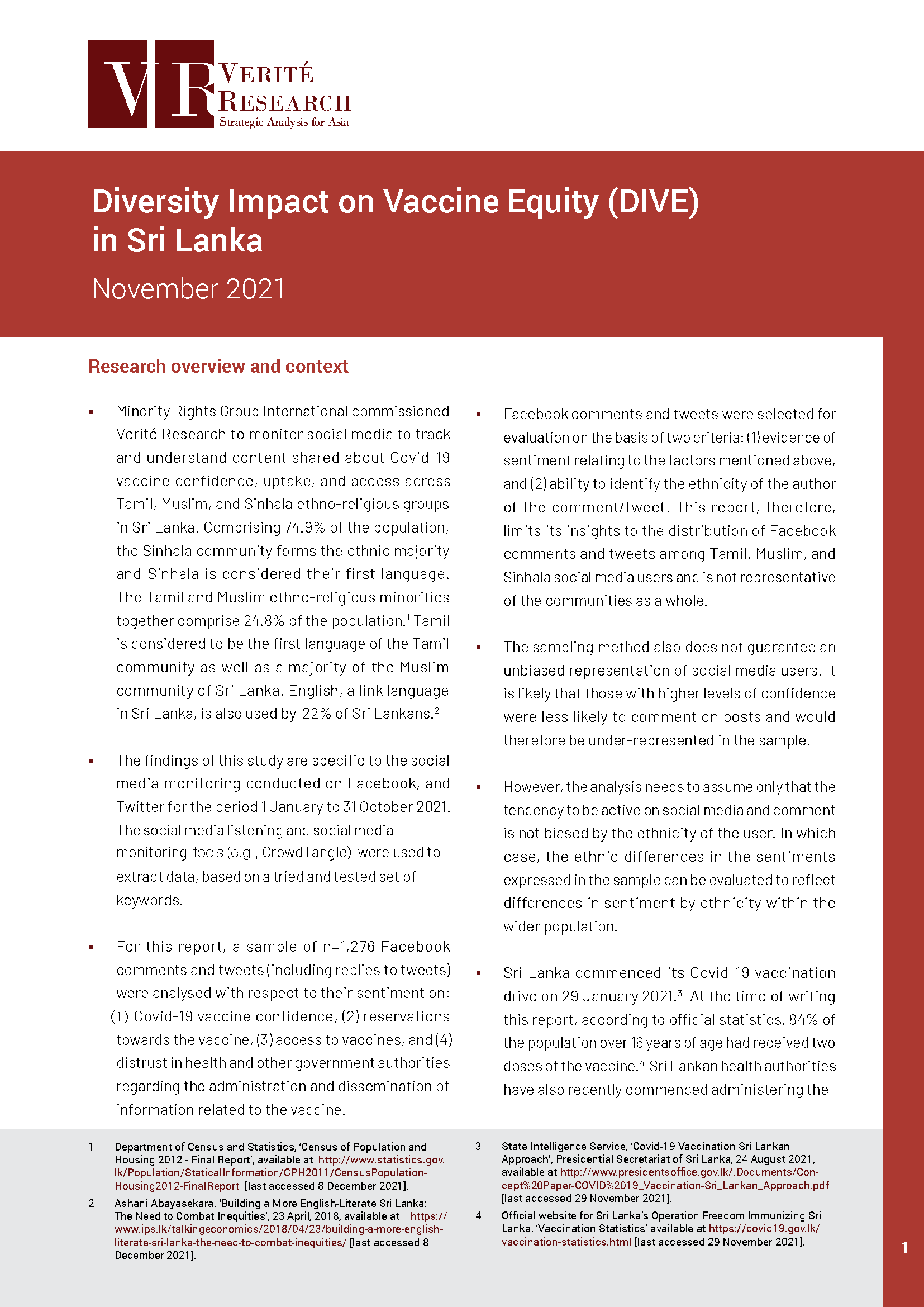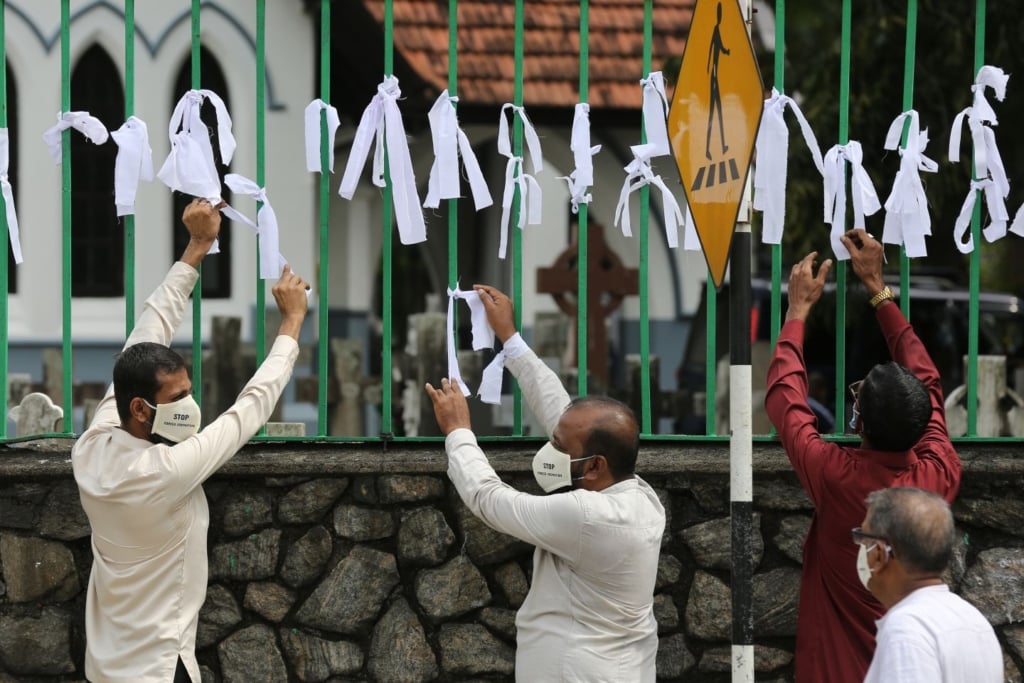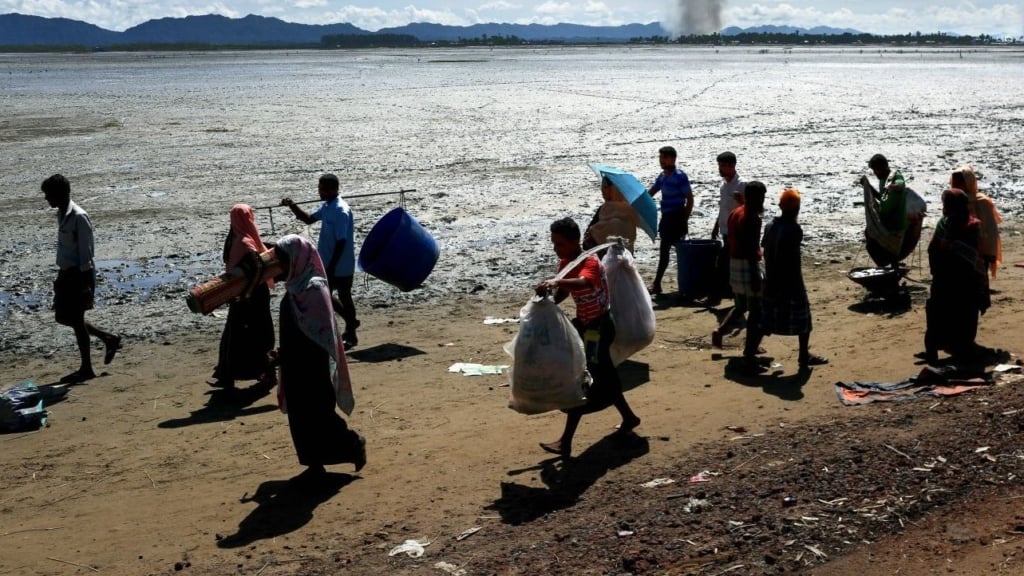Sri Lanka
-
Main languages: Sinhala (official and national language), Tamil (national language), English
Main religions: Buddhism (70.1 per cent), Hinduism (12.6 per cent), Islam (9.7 per cent), Christianity (6.2 per cent Roman Catholic, 1.4 per cent other denominations (2012 Census). There is a strong overlap between religion and ethnicity in Sri Lanka, with most of the Buddhist majority estimated in the 2012 Census belonging to the Sinhalese population. Similarly, most of the Hindu and Christian minorities are Tamil. The Muslim community is made up primarily of Sri Lankan Moors, Malays and smaller religious groups. Other religious minorities, including Parsis and Baha’i, are also present in the country in smaller numbers.
According to the 2012 Census, the majority of the population are Sinhalese (74.9 per cent). Minority and indigenous groups include Sri Lankan Tamils (11.2 per cent), Indian Tamils (4.2 per cent), Sri Lankan Moors (9.3 per cent), Malays (0.2 per cent), Burghers (0.2 per cent), Sri Lankan Chetty (5,600), Bharatha (1,700) (2012 Census) and Wanniyala-Aetto (also known as Veddhas) (estimates suggest around 2,000, though they are not included in the official census). The distribution of the population varies greatly by region, however, with Sinhalese making up an estimated 95.0 per cent of the population in Southern Province, for example, but only 23.2 per cent in Eastern Province and just 3.0 per cent in Northern Province. By contrast, Indian Tamils are concentrated in Central and Uva Provinces while a large number of Sri Lankan Moors reside in Eastern Province.
Sri Lanka has a plural society. The majority group, the Sinhalese, speak a distinctive language (Sinhala) related to the Indo-Aryan tongues of north India, and are mainly Buddhist.
There are two groups of Tamils: ‘Sri Lankan Tamils’ (also known as ‘Ceylon’ or ‘Jaffna’ Tamils) are the descendants of Tamil-speaking groups who migrated from southern India many centuries ago; and ‘Up Country Tamils’ (also known as ‘Indian’ or ‘estate’ Tamils), who are descendants of comparatively recent immigrants. Both Tamil groups are predominantly Hindu with a small percentage of Christians. They also speak their own distinct language called Tamil.
A significant proportion of Muslims (includes Sri Lankan Moors, Malays and other smaller religious sects like Bhoras and Khojas) live in the north and east, particularly the latter, where they constitute about a third of the population. The remaining Muslim community is dispersed throughout the urban centres of Sri Lanka. Muslims are also divided between mainly agriculturists living in the east, and traders who are dispersed across the island. Muslims speak both Tamil and Sinhalese depending on the area they live in.
The forest-dwelling Wanniyala-Aetto comprise a very small community of indigenous people. The entire community is in danger of extinction. Sri Lanka also has other, smaller communities, such as the Burghers who are of Dutch and Portuguese origin.
-
With the end of the conflict between Sri Lankan government forces and the Liberation Tigers for Tamil Eelam (LTTE or ‘Tamil Tigers’) in 2009, normality has returned for much of the population of Sri Lanka. But for members of the country’s two main minority groups – Tamils and Muslims – living in the north and east of the country, harsh material conditions, economic marginalization, and militarization remain prevalent. Across the region, many members of the Tamil and Muslim communities remain displaced, living in IDP camps or resettled to areas where they have not been provided with adequate housing, have limited livelihood opportunities in violation of international standards, and have limited livelihood opportunities.
The bitter legacy of the decades-long conflict is particularly felt in the north and east of the country, where a large proportion of the country’s Tamil minority reside. Over years of fighting between the forces of the Sinhalese majority government and LTTE militants, these regions experienced huge upheaval due to large-scale displacement, thousands of extra-judicial killings and the increasing militarization of public life – issues that are still affecting daily life in the areas today. In particular, since the end of the armed conflict there have been a number of reports by international and national human rights organizations documenting cases of sexual assault and violence against Tamil women.
While the civil conflict was primarily between authorities and the Tamil minority, Sri Lanka’s small Muslim minority was also deeply affected by the civil conflict, and many are still in a limbo decades after being displaced from their homelands. Sri Lanka’s northern Muslims were being forcibly evicted by Tamil militants in what was the country’s largest single case of ethnic cleansing during the conflict. Thousands of them remain in displacement camps in poor conditions, emphasizing the importance of including the concerns of the Muslim population in any transitional justice arrangement.
Since the end of the conflict a hate campaign, led by the Buddhist extremist organization Bodu Bala Sena (BBS), has targeted Muslims and focused particularly on the community’s religious and social practices, such as their dress codes, prayer rituals and halal slaughter methods. This has led to a number of violent clashes including an outbreak of communal violence in March 2018 in the central hills around Kandy, with hundreds of Sinhalese Buddhists attacking Muslim villages. Though initially triggered by reports of a Sinhalese man who was attacked by a group of Muslims following a traffic accident and later died of his injuries, the riots were underpinned by deeper tensions between the communities, driven in large part by anti-Muslim propaganda by Buddhist extremists. The Sri Lankan government subsequently declared a state of emergency as the violence spread.
Religion is intrinsically linked to ethnicity in Sri Lanka: Buddhists are mostly Sinhalese, Hindus are mostly Tamil, and to be Muslim is both an ethnic and religious identity. The Christian community, comprising Roman Catholics, traditional Protestant Christians and non-traditional or evangelical Christians, encompasses both Sinhalese and Tamil ethnic groups. Sri Lanka’s religious minorities face violations of their constitutional right to religious freedom in many forms, including hate speech, discriminatory practices, threats and intimidation, destruction of property as well as physical violence. Hindus, Muslims and Christians, who together make up just under 30 per cent of the population, are affected to varying degrees. Other religious minorities, including Parsis and Baha’i, are also present in the country in smaller numbers.
The situation for minority women in the north and east of Sri Lanka remains deeply insecure. Thousands of women lost husbands and other family members to death or disappearance, while human rights abuses and violations ranging from sexual violence to land grabbing have continued. Many minority women in the north and east are now the primary income earners for their households, yet these responsibilities have not been accompanied by improved rights or status. Besides the struggle to secure land rights or access local resources, they also face limited livelihood opportunities in the post-armed conflict context and have not been properly included in official development programmes.
The militarization of the north and east from 2009 has contributed to continued insecurity for minority women. Many, especially widows and the wives of disappeared or ‘surrenderees’, are vulnerable to sexual harassment, exploitation or assault by army personnel or other militias. The military presence in the area, together with the increasing chauvinism of Sri Lanka’s political and religious hierarchy, has also reduced their cultural and religious freedoms – including their right to mourn their dead. Furthermore, resettlement in the north and east, not only by those displaced during the armed conflict but also through government-sponsored relocation of Sinhalese workers and households, has raised tensions between communities in the current divisive environment. This is the result not only of disputes over land and resources but also differing social and cultural norms. The increasing prevalence of sexual exploitation and relationships, coerced or otherwise, has put women on the frontline of these conflicts.
However, positive hopes for a more inclusive and equitable future for Sri Lanka’s minorities have been raised following the surprise defeat of Mahinda Rajapaksa, the country’s President between 2005 and 2015, by former health minister Maithripala Sirisena. Rajapaksa – seen by many as complicit in the war crimes carried out by security forces in minority-populated regions in the north and east during the conflict, including the killing of tens of thousands in the final weeks of the war – was ousted in large part due to minority voters, who voted against him in significant numbers. His departure brought fresh aspirations for the country’s minorities after years of discrimination and violence despite the end of the conflict. Nevertheless, the legacy of Sri Lanka’s civil war – in particular, large-scale displacement, lack of justice for extrajudicial killings, sexual violence and the militarization of publlc life – continues to be felt, however, particularly in the north and east of the country where a large proportion of the country’s minorities reside.
-
Environment
The Democratic Socialist Republic of Sri Lanka (formerly known as Ceylon) comprises one large, compact island and several islets, separated from the Indian subcontinent by a strip of sea which at its narrowest point is 40 kilometres and centrally located in the Indian Ocean, lying off the southern tip of India. Sri Lanka is strategically placed in the Indian Ocean, alongside major trading routes from the Far East, Europe as well as from Africa.
History
Pre-independence
For centuries Sri Lanka was under the rule of successive kingdoms and increasingly, from the 16th century onwards, increasing areas of the island fell under the control first of the Portuguese, then the Dutch and finally the British. From 1815 the entire island was under British colonial rule and was later granted self-rule in 1931. This step paved the way for full independence in 1948. However, this period – in particular, the British administration’s policy of divide and rule, reflected in its apparent preference for Tamils in the civil service and other positions of power – helped lay the foundation for the subsequent ethnic divisions that would divide the country in the wake of independence.
Post-independence
The country gained independence from British rule on 4 February 1948. The first Prime Minister, Don Stephen Senanayake, sought to reconcile the legitimate interests of the majority and minority ethnic and religious groups within the context of a parliamentary form of government. His United National Party (UNP) entrenched its position within a year of the gaining of independence and strengthened its hold on Parliament.
The first major challenge to the UNP came from the Sri Lanka Freedom Party (SLFP), formed in 1951 under the leadership of S.W.R.D. Bandaranaike. The SLFP contesting under the coalition Mahajana Eksath Peramma (MEP, People’s United Front) swept the UNP government out of power in 1956.
Growth of Sinhala nationalism
Bandaranaike came into power on the Sinhala nationalist card and his government was responsible for making Sinhala the country’s official language, isolating the Tamil speaking ethnic Tamils and Muslims. However, in view of the political pressure emanating from the Tamil Federal Party, the main minority party, the-then prime minster proposed plans for preferential treatment for Tamils, and the Bandaranaike-Chelvanayakam pact of 1957 also promised ‘recognition of Tamil as the language of a national minority’. The pact earned the wrath of the majority Sinhalese, which in September 1959 resulted in Bandaranaike’s assassination by a Buddhist monk.
Rising separatism
His widow Sirimavo Bandaranaike succeeded him. She too continued with majoritarian policies. Her government introduced a new Constitution, which established the country as a republic, severing constitutional links with the United Kingdom. While pursuing the ‘Sinhala only’ policy with great vigour and establishing the religious pre-eminence of Buddhism, the new republican Constitution did away with the earlier Constitution’s safeguards for minorities. That same year a system of ‘standardization’ was introduced in the universities, which in practice meant that Sinhalese were given a better chance of admission than many highly educated Tamils. Tamil political parties were increasingly becoming disillusioned and slowly moving towards militancy. Tamils were also becoming victims of rising human rights violations including random mob violence.
Bandaranaike during her regime also faced a southern insurrection by mainly unemployed Sinhala youths. Several thousand young people, mainly university students are believed to have been killed or disappeared in the government sponsored crushing of this insurrection.
Economic upturn amidst increasing violence against minorities
The SLFP lost power in the 1977 general election and the UNP administration of Prime Minister J.R. Jayewardene took over. Jayewardene replaced the 1972 Constitution and assumed unprecedented power as executive president, becoming both head of state and head of government. He was elected to a second six-year term in October 1982, and in a referendum won a mandate to extend parliament to 1989.
Jayawardane’s UNP is largely recognized for taking Sri Lanka away from restrictive socialist policies practiced by his predecessors and for opening the country’s economy to international trade and investment. But the situation for minorities hit a new low during his period. Festering tension amongst minorities, particularly the Tamils over continuous marginalisation and human rights abuses led to increasing militant attacks against state targets. State-backed attacks against Tamils in the capital city Colombo and in other urban areas in July 1983 resulted in thousands of killings and several hundred thousands displaced. This is seen as a turning point in the Sri Lankan conflict leading to a full blown out war between Tamil militant groups and the largely Sinhala Buddhist Sri Lankan army.
Indian factor
In 1987 in a bid to appease the Tamils Jayawardene signed an accord with Indian Prime Minister Rajiv Gandhi that saw the disarming of Tamil militants in exchange for greater decentralization. Indian armed forces were brought into monitor the peace accord. All militant groups except the LTTE disarmed, leading Indian forces into bloody battles in the north and east of Sri Lanka (see details under historical context of Tamils)
In late 1988, Prime Minister Ranasinghe Premadasa was elected executive president, and in 1989 the UNP won a large majority in parliamentary elections. Premedasa ordered the Indian forces out and began negotiations with the LTTE, which lasted just a few months. Premedasa also faced a southern uprising, led by the Marxist Janatha Vimukthi Peramuna (JVP), propelled by unemployment and rising social problems. His heavy-handed use of armed forces to crush the uprising resulted in thousands of killings and some 30,000 disappearances and is considered one of the blackest periods for human rights in the country’s post-independence history.
The LTTE has also been responsible for large scale violations against minorities. The rebel group has been proscribed in several countries including the US, EU, UK and India mainly for its violent assaults on civilian targets including the common use of suicide bombers, which the Tigers are reputed to have pioneered. Other large-scale human rights violations by the organization include child conscription, killing and torture of political opponents and ‘ethnic cleansing’ of Muslims from the north. In one of its most horrendous acts the Tigers in 1990 drove some 70,000 Muslims out of the north of Sri Lanka and many of them continue to remain in displaced camps. The Muslims have particularly been targeted by the Tigers, including through land grabbing, evictions, killings, torture, abductions and extortion. The rebels are also known for their lack of tolerance of Tamil political opponents.
In May 1993, President Premadasa was assassinated by a LTTE suicide bomber, and was succeeded by Dingiri Banda Wijetunga. Parliamentary elections held in August 1994 saw the UNP government narrowly defeated by a coalition People’s Alliance (PA), led by the SLFP under the leadership of Solomon and Sirimavo Bandaranaike’s daughter Chandrika Kumaratunga.
New hopes for minorities
For three months Chandrika Kumaratunga remained prime minister as Wijetunga held the office of president. However, in November 1994 Chandrika Kumaratunga was elected president by an emphatic 62 per cent of the vote. Kumaratunga came into power with strong minority backing and one of her first tasks after assuming office was to start negotiations with the LTTE. She also pursued a parliamentary consultative process to produce constitutional reforms offering greater devolution of power to minorities. However, this period of peace was short lived and once the peace talks collapsed Kumaratunga pursued a stringent military strategy. Years of battles in northern Sri Lanka left several thousands dead on both sides. Kumaratunga’s most notorious military victory was the capture of the northern LTTE stronghold Jaffna, where the rebels had been running a de facto state. Following its capture, Jaffna witnessed widespread human rights violations, particularly disappearances and torture of minority Tamils.
Kumaratunga was reputed for pursuing a tough line against the LTTE, including incessantly pursuing an international ban on the organization in countries like the US and UK. She won a second term in 1999, propelled by some element of sympathy for having survived a LTTE suicide bomb attack that left her injured and blind in one eye. She continued her military strategy throughout her second term but towards the end she requested the Norwegian government to facilitate peace talks with the LTTE, though a new round of negotiations did not take place whilst her party was in government.
Consensual politics and new round of peace talks
In the 2001 parliamentary election the Sri Lankan public voted in the UNP on a largely pro-peace platform while Kumaratunga who belonged to the opposition political party the People’s Alliance remained as President. It was unprecedented for an elected President to be of a different party to her government and opened new avenues of reconciliatory politics between the country’s two major political parties.
Ranil Wickremesinghe was appointed Prime Minister in 2001 and with Kumaratunga’s backing went in for talks with the LTTE. A cease-fire was declared in April 2002 and the main road linking the rebel controlled north to the rest of the country was opened up for the first time in more than two decades facilitating free movement of people and goods across the country. The peace process was internationally hailed and heralded a relatively secure period for minorities and a general economic boom throughout the country.
However, by 2003 incidents of violence and cease-fire violations were rising and in 2003 the LTTE formally pulled out of the negotiation process. While the cease-fire was under threat politics in the capital city Colombo were also becoming turbulent. As relations between the President and her government soured, Kumaratunga in 2004 dissolved parliament mainly blaming the UNP for poorly handling the peace process. On 23 April Mahinda Rajapaksa was elected Prime Minister. In August 2005, it was decided by the Sri Lankan Supreme Court that presidential elections would be in held November 2005. Mahinda Rajapaksa emerged as the fifth Executive President of Sri Lanka in a closely contested election. Mahinda Rajapaksa’s victory has been attributed to large-scale support from southern Sinhala Buddhist voters.
The renewal of the conflict
The hope of the peace process yielding dividends was shattered in 2006 when the island was plunged back into full-scale war. Peace talks in Geneva in October 2006 were a failure, despite both sides claiming to adhere to the 2002 ceasefire. Nearly 3,000 people were reported killed in the fighting in 2006, with 216,000 displaced. The conflict escalated during 2007 with major Sri Lankan army operations in the east and north of the country leading to the displacement of tens of thousands of mainly Tamil civilians.
2008 brought further devastation for Sri Lankan minorities, particularly Tamils, with fierce fighting between government forces and LTTE rebels. During the year, the military captured several of the Tigers’ strongholds in northern Sri Lanka; as the fighting intensified towards the end of the year, civilian casualties began to rise. The military was responsible for some attacks on civilian targets, including schools and camps for the displaced. Civilians trapped in the fighting were attacked and killed by the Tigers and forced to leave their homes. The Tigers also began to forcibly recruit and use civilians as human shields.
The following year, however, proved to be pivotal as it saw the end of the country’s 30-year conflict. Fighting between government forces and the LTTE movement reached a climax in the early part of 2009, as the government took over large areas of land that had been under rebel control. By February, the LTTE was cornered in a tiny area of land in north-eastern Sri Lanka, where they were essentially holding over 200,000 ethnic Tamil civilians hostage. Despite the concentration of such a large number of civilians in the conflict zone, the Sri Lankan military continued to press on. Between February and May 2009, daily reports emerged in international media of dozens of civilian killings. The Sri Lankan government clamped down on media coverage, and media and local and international NGOs were restricted from entering the war-torn areas, making it difficult to verify information. The government maintained that only some 75,000 people were caught up in the fighting and vigorously denied reports that civilians were being killed. The Sri Lankan military unilaterally declared a no-fire zone and asked civilians to leave LTTE-controlled areas for their safety. However, beginning on 7 April 2009, the military shelled the zone, killing hundreds of civilians, including children.
The Sri Lankan President Mahinda Rajapaksa declared that the conflict had ended on 19 May 2009, following the killing of the LTTE’s senior leadership, including its leader Vellupillai Prabhakaran. In most parts of the country, people thronged the streets, jubilant and celebrating the end to a conflict that had claimed more than 70,000 lives. In the north of the country, however, the situation for ethnic Tamils was alarming. International media reported that over 280,000 people, who had been trapped by the fighting for months without food and who were traumatized by the violence, had begun pouring into displaced camps. The displaced were held in makeshift closed camps that were severely overcrowded and lacking facilities. Food, water, shelter and sanitation were huge problems. Families were separated. Local and international NGOs and the media were given very limited access. There were reports of abductions, kidnappings, arbitrary arrests and torture from within the camps. Thousands of people were reportedly detained as suspected LTTE cadres.
An uncertain peace
The government came under severe pressure after the end of the conflict to begin the promised process of seeking accountability for the violations of humanitarian law that occurred on both sides, in their bid to end the 29-year conflict with the LTTE in 2009. There were allegations of grave atrocities committed in the final months of fighting, including filmed evidence of the arbitrary killing of captives by the 53rd Division of the Sri Lankan army that took place in May 2009. With pressure mounting for an independent inquiry, the UN Secretary-General Ban Ki-moon announced the creation of a three-member investigative panel. In response, the Sri Lankan government, which had resisted international scrutiny, announced the establishment of the Lessons Learnt and Reconciliation Commission (LLRC) in May 2010. The international community and human rights organizations reacted sharply to the creation of this commission, since it was headed by a former Attorney-General, raising questions about its independence.
In the ensuing years, the problem of how to ensure justice for wartime atrocities and reconciliation between the majority Sinhalese and the Tamil minority remained unresolved. In 2011, the government and the military issued a pair of reports that sought to address some of the violations, yet ultimately they proved to be a disappointment to rights groups hoping for significant signs of progress.
Another protracted issue related to internal displacement, with tens of thousands of Muslim and Tamil IDPs remaining displaced in the wake of the conflict. The Muslim communities were expelled from the north by the LTTE in 1990, and their reintegration back into the towns and villages from where they were displaced proved to be a sensitive process. As the Tamil and Muslim communities were learning to live side by side once again, after 20 years of separation, inter-communal tensions grew.
The human right environment, particularly in the north and east of the country traditionally populated by the country’s ethnic and religious minorities continued to be undermined by a climate of impunity. Serious human rights violations, such as abductions, arbitrary arrests and detention, torture and sexual violence were regularly reported from the country’s former conflict areas. These areas remained heavily militarized, with security forces dominating businesses, farming and development projects.
However, after years of continued rights abuses and militarization, January 2015 ushered in fresh hopes for Sri Lanka’s minorities with the surprise defeat of Mahinda Rajapaksa in the presidential elections and the appointment of former health minister Maithripala Sirisena as the country’s Executive President. Rajapaksa was defeated in large part due to minority voters, who voted against him in significant numbers. The defeat of Rajapaksa brought new hopes and aspirations for the country’s Tamils after years of discrimination and violence despite the end of the conflict. Nevertheless, the legacy of Sri Lanka’s bitter decades long conflict – in particular, large-scale displacement, lack of justice for extrajudicial killings, sexual violence and the militarization of publlc life – continues to be felt, however, particularly in the north and east of the country where a large proportion of the country’s Tamil minority reside.
Governance
Sri Lanka’s post-independence history has been marred by several periods of large-scale human rights violations. The country has a history of state-led brutal human rights assaults indiscriminate of ethnic origin. However, particularly during the decades-long civil conflict, minority Tamils and to some extent Muslims have faced targeted human rights violations including extra-judicial killings, enforced disappearances, arbitrary detentions, torture of opponents, denial of political aspirations, and negation of civil and political rights.
The Rajapaksa government (2005 – 2015) promoted Sinhala Buddhist nationalism as a means of garnering the support of the majority community while alienating the country’s minorities. The regime’s tenure was marked by human rights violations and repression of dissenting voices. However, the year 2015 marked significant political change with the opposition candidate Maithripala Sirisena being elected Executive President, defeating Rajapaksa in January. This was followed by the coalition United National Front for Good Governance (UNFGG) led by the United National Party, winning the parliamentary election with Ranil Wickremesinghe as Prime Minister. The election represented hope for change for many, including Sri Lanka’s minorities.
One of the first steps of the new government was its attempt to criminalize hate speech through an amendment of the Penal Code. However, this hasty and ill-thought-out proposal was shelved in December 2015 following widespread opposition from legal and human rights activists. The proposed amendment was almost identical to provisions found in the controversial Prevention of Terrorism Act, and it was feared that the amendment could be similarly used as a potential tool of harassment and repression rather than a deterrent to hate speech.
Sri Lanka’s constitutional provisions on the freedom of religion or belief broadly mirror international standards. However, judicial interpretation – particularly of Article 9 – demonstrates disparity in the manifestation of this right. Article 9 accords Buddhism ‘foremost place’, casting a duty upon the state to foster and protect Buddhism. While this does not amount to Buddhism being formally declared the state religion, in practice it plays a significant role in every aspect of Sri Lankan society, culture and politics.
Consequently, it appears that the majority religious community enjoys greater protection and freedom to manifest their religious beliefs than the minority religious communities, as exemplified in the Menzingen Sisters case in 2004. In this case, which challenged the incorporation of a Catholic order of nuns, the Supreme Court determined that the right to propagation was not guaranteed by the Constitution and further, that ‘the propagation and spreading of Christianity … would not be permissible as it would impair the very existence of Buddhism’.
-
General
Lawyers for Human Rights and Development (LHRD)
Centre for Policy Alternatives
Website: http://www.cpalanka.orgTamils
International Centre for Ethnic Studies (ICES)
Website: www.ices.lkWanniyala-Aetto
Survival International (UK)
Website: http://www.survival-international.org/tribes.php?tribe_id=59Living Heritage Trust of Sri Lanka
Website: www.vedda.org
Updated March 2018
Related content
Latest
View all-
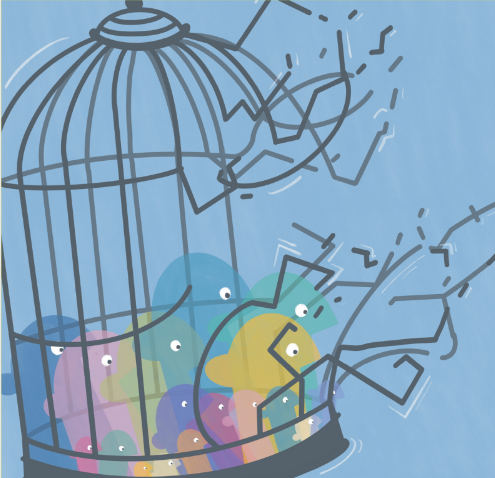
16 February 2023
Minority rights protection in South Asia curtailed by minimal engagement with human rights mechanisms, report finds
Poor engagement by South Asian states with international human rights mechanisms is providing fertile ground for a wide range of rights…
-

16 February 2023
Minority rights protection in South Asia curtailed by minimal engagement with human rights mechanisms, report finds
Poor engagement by South Asian states with international human rights mechanisms is providing fertile ground for a wide range of rights…
-
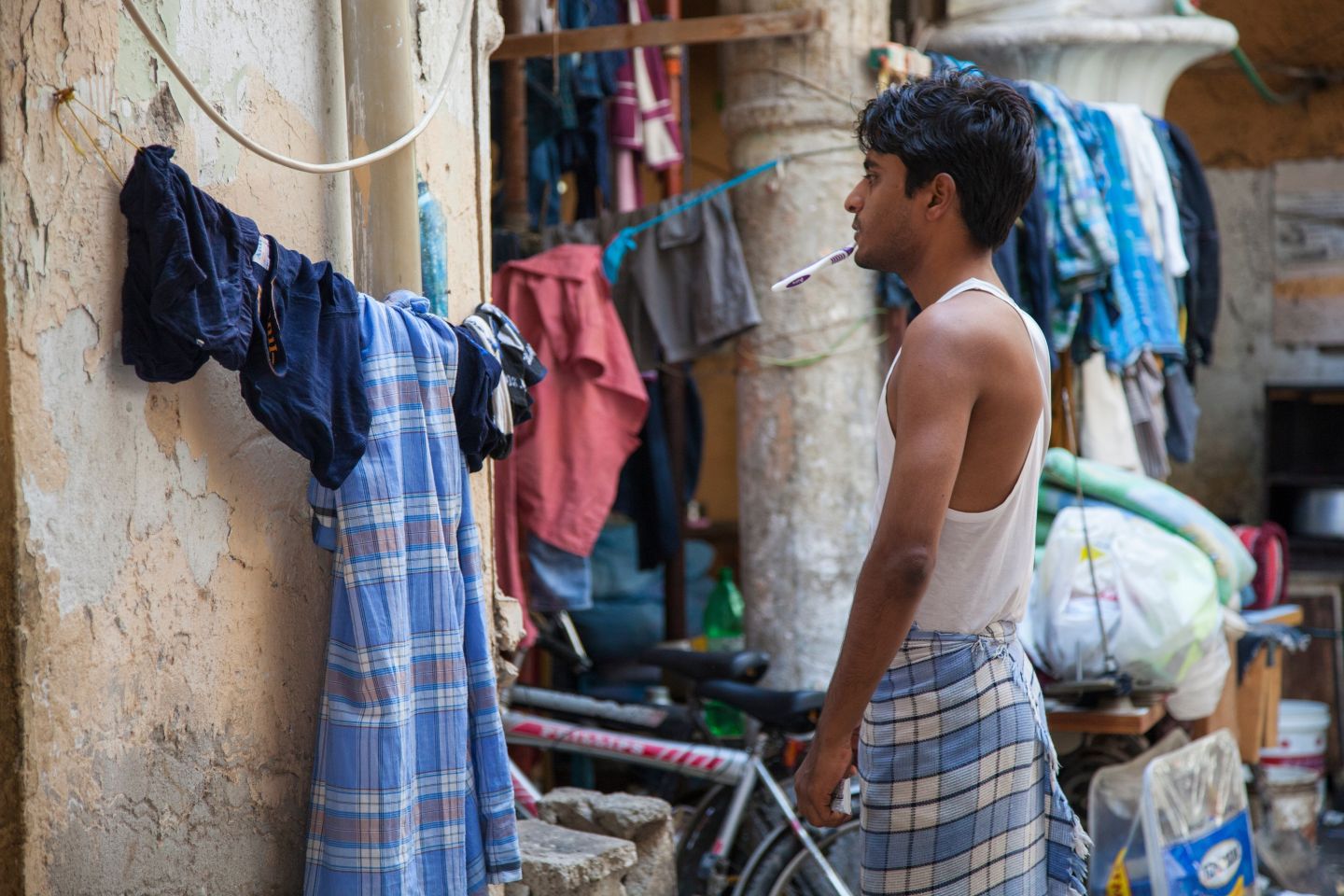
17 November 2022
Kick off in Qatar: Who is being overshadowed?
By Menka Sandrasagren, Administration Assistant at Minority Rights Group International This weekend, 60,000 football fans will watch…
Minority stories
-
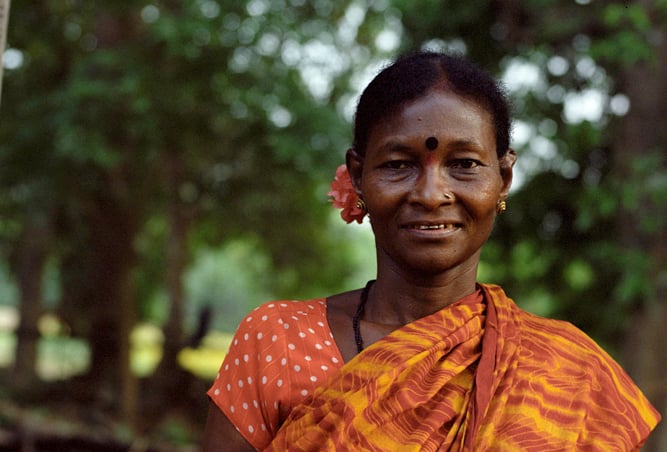
28 October 2015
Afro-Descendants: A Global Picture
Drawing on a range of case studies, this publication seeks to highlight the invisibility and discrimination that persist for people of African descent to this day, as well as celebrate their achievements as activists, artists and citizens.
- Central Africa
- Discrimination
- Minority stories
-
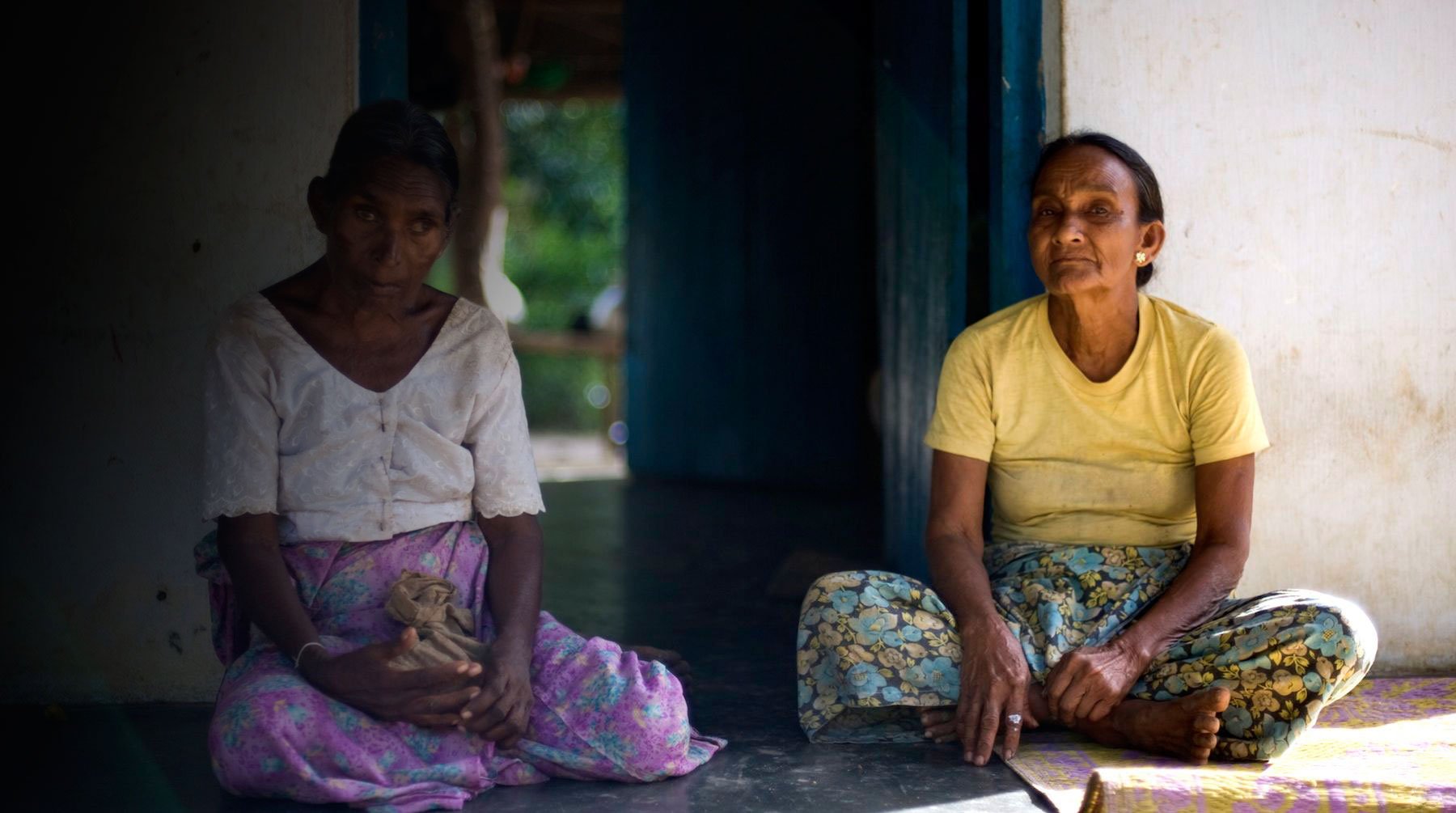
22 August 2015
Rights and Reconciliation for Women in Sri Lanka
This project highlights, through their art, the hopes and fears of minority women and their thoughts on the possibility of reconciliation.
- Sri Lanka
- Abkhaz in Georgia
- Women
- Minority stories
Reports and briefings
View all-
4 April 2022
Diversity: Impact on Vaccine Equity (DIVE)
In partnership with Bytes for All, Grand Synergy Development Initiative and Verité Research, for this final report, Minority Rights Group…
-
10 March 2022
Diversity: Impact on Vaccine Equity (DIVE)
Minority Rights Group International worked in partnership with Grand Synergy Development Initiative (GSDI), Bytes for All (B4A) and Verité…
-
8 December 2016
Confronting intolerance: Continued violations against religious minorities in Sri Lanka
Though Sri Lanka’s three-decade long armed conflict came to an end in 2009, hopes for a peaceful transition have been marred by ongoing…
Partner publications
View all-
16 February 2023
South Asia State of Minorities Report 2022 – Weakening Human Rights Commitments and Its Impact on Minorities
The condition of minorities in South Asia, home to a fifth of humankind, is grim, to say the least. Religious, ethnic and linguistic…
-
31 March 2022
Diversity Impact on Vaccine Equity in Sri Lanka
Covid-19 has shed light on ongoing disparities in vaccine access and confidence among different ethnic groups worldwide. Against this…
-
7 February 2022
Diversity Impact on Vaccine Equity in Sri Lanka
Covid-19 has shed light on ongoing disparities in vaccine access and confidence among different ethnic groups worldwide. Verité Research…
Programmes
View all-
- North Africa
- Right to health
-
- Central and Eastern Europe
- Capacity-building
-
- South Asia
- Religious minorities
Events
-
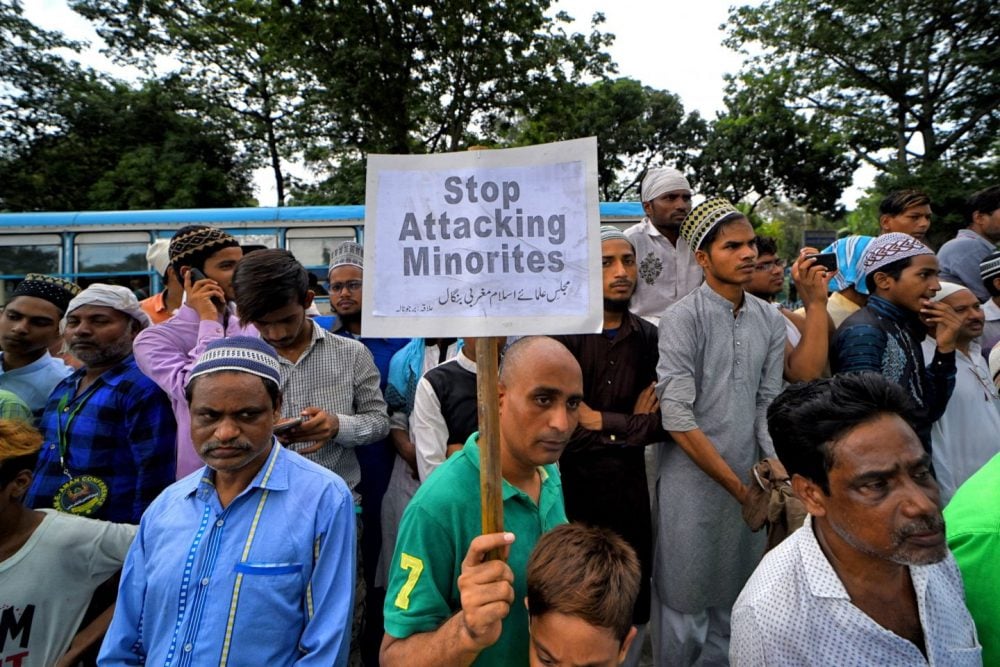 Video on demand
Video on demand 16 March 2021 • 2:00 – 3:00 pm CET
From hate to violence: Preventing & countering hate speech against minorities in South Asia
South Asia has experienced heightened incidence of hate speech and incitement to hatred, with grave consequences for its minorities –…
Don’t miss out
- Updates to this country profile
- New publications and resources
Receive updates about this country or territory
-
Our strategy
We work with ethnic, religious and linguistic minorities, and indigenous peoples to secure their rights and promote understanding between communities.
-
-
